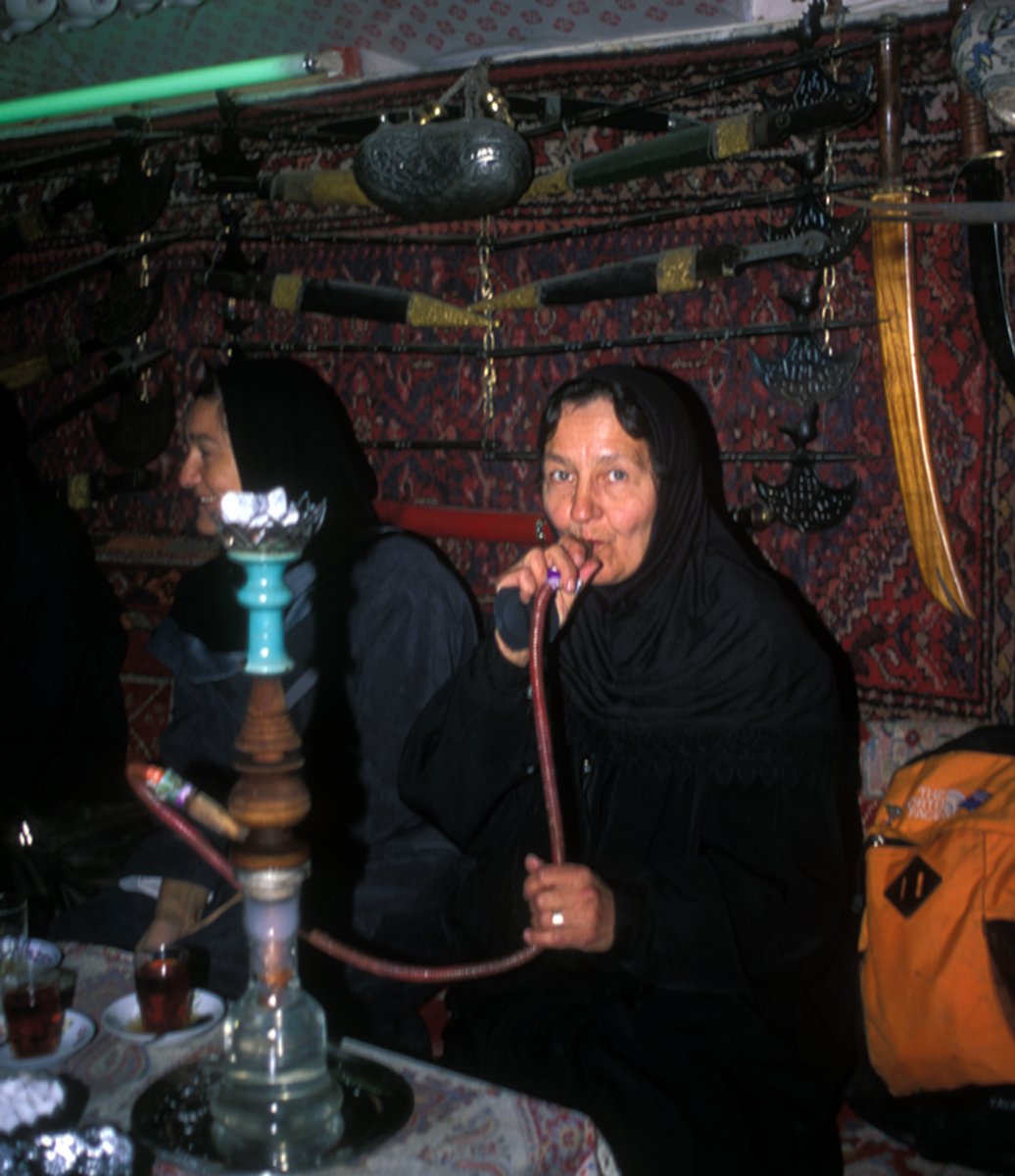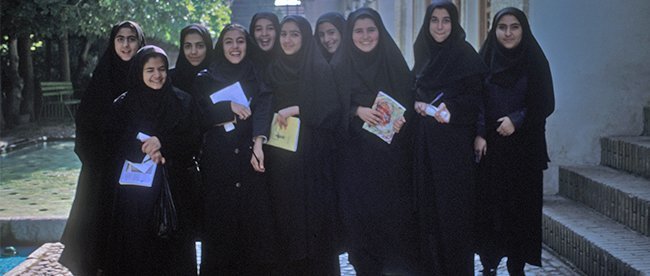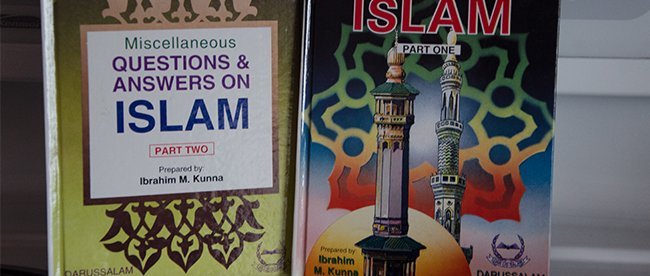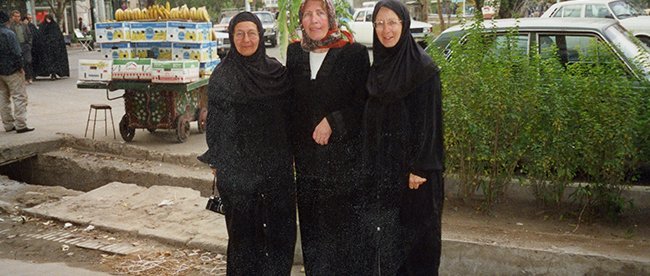
Hijab or no Hijab
I travelled independently in Iran for two months, a few years ago. It was compulsory for all women to wear a hijab and a chador or abaya when in public and at that time, the entire costume was to be black.
The hijab is a tight head -covering that holds all head hair out of sight. Once, while I was walking down the street, a naughty piece of hair managed to escape its prison. A woman grabbed it and pulled, while at the same time shaking her finger at me. No hair should show was what she was indicating.
The chador is a plain piece of sheeting that drapes over the head and flows to the ground. It is tightly clutched shut at the chest so nothing underneath shows. Often women get scars at the side of their mouth from holding the chador with their teeth while they hold a grocery bag or a child with their hand. An abaya is a long straight coat worn over any garments the chooser wishes to wear or as far as I could tell, not wear.
I had no complaints about wearing the clothes while in Iran. It was the law. On the up side, I never had to worry about my hair being combed or if my jeans were clean. I was covered. Another bonus was that I was invisible, unless I put my daypack on. If I did, I would be approached by men wanting to practice English, or even more exciting, wanting to touch my arm or shoulder.
In North America there is a World Hijab Day where non-Muslim women of any faith are encouraged to wear hijabs. This practice was started by a Muslim woman in the hopes of decreasing the discrimination and abuse Muslim women receive. In Canada we occasionally show solidarity by wearing the garment for a day or even, in some cases, for a month.

Some Islamic women appreciate this gesture. However some do not. According to Nashwa Khan, a Canadian Muslim feminist who writes for This Magazine, this is “Hijab Tourism.” She feels it diminishes the experiences of Muslim women. Others feel these attempts are “gimmicky.”
Personally I find this practice divisive rather than supportive. Bringing attention to any difference in people whether it be sexual, cultural, mental, religious or physical, to me is troublesome.
I have a friend who has a visual impairment. I have covered one eye and tried to hike down hill to be like her in regards to depth perception. What it did for me was show me the problems she encountered when the hill is steep and rocky. I now tell her how steep the drop will be or how uneven the rock is to cross.
I doubt women wearing the hijab on World Hijab Day experience anything that teaches them about discrimination. I agree with Khan on that.

If people wish to be sensitive and offer real support to Muslims, maybe invite them for tea and talk about having babies or the kind of car they’d like to drive. Discuss the Ayatollah or Bashar al-Assad and his chemical bombs. Have them teach you how to cook ethnic dishes from their country and take lessens in Arabic or Bengali. Take them hiking into the mountains or fishing at a local lake. Argue about the differences between Christianity and Islam. Discuss topics like abortion, gay rights or female circumcision like that practiced in Sudan or Egypt. And discuss how laws in Canada protect us against what we believe to be oppressive practices.

Talk to them about Trump and how much his rhetoric has added to the recent violence against minorities — minorities that include women, disabled, brown/black-skinned and yes, Muslims.